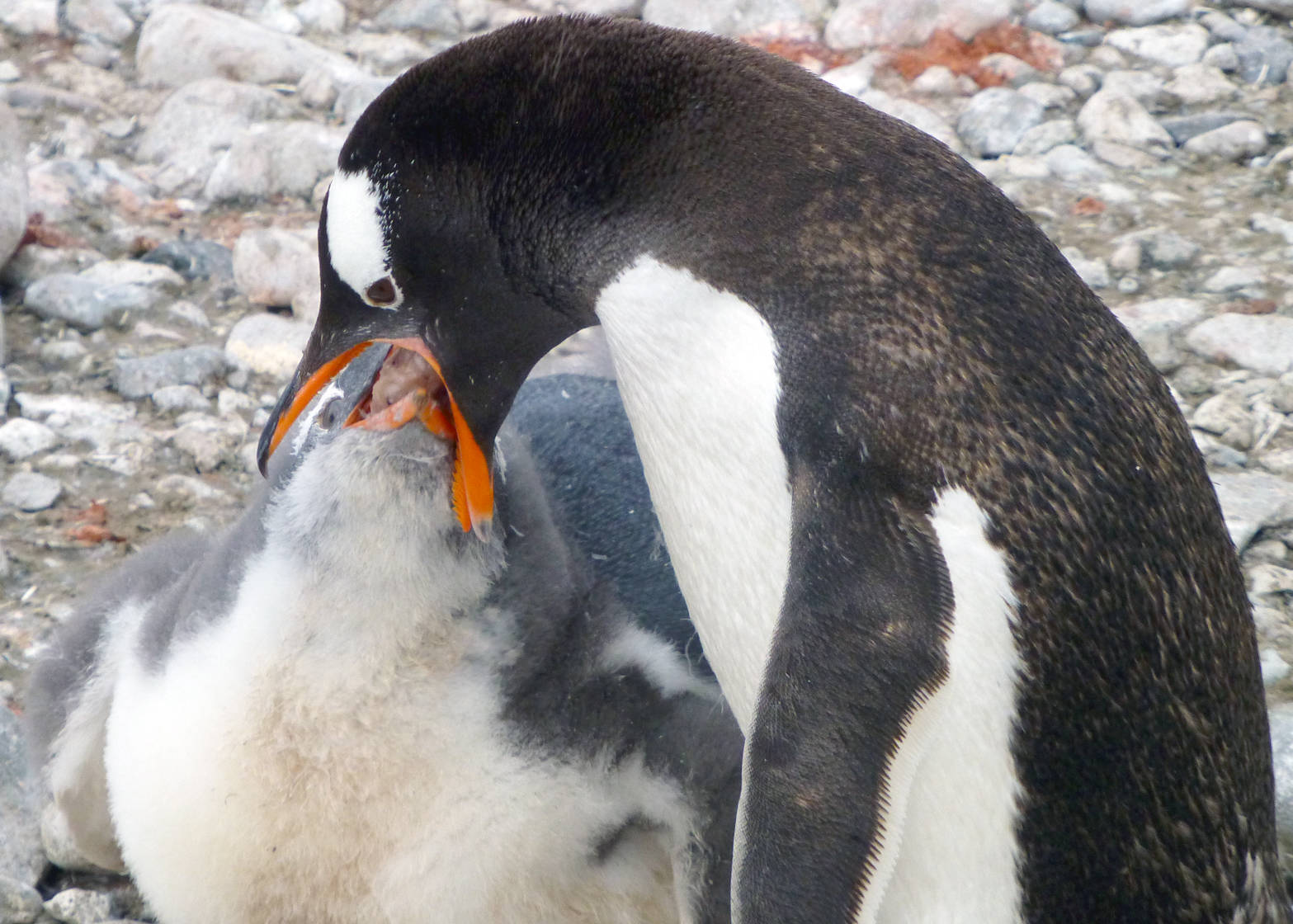I stood on the deck of the USHUAIA in late February as we moved south through the Gerlache Strait on the east side of the Antarctic Peninsula. We were on the hunt for whales. Our most likely sightings would be of minke and humpback whales, both of which can be seen in Kachemak Bay in the spring and summer months. But these would be the Antarctic species of minkes and the Southern Ocean subspecies of humpbacks and I was anxious to see these familiar forms against a curtain of ice.
I scanned the horizon and spaces between the sea ice trying not to get distracted by Gentoo penguins as they popped up and down through the surface of the frigid water. Crabeater seals looked like plump sausages catching a ride on passing icebergs, too tired or full or bored to give more than a casual glance up at our ship. This surprising contrast of abundance in a seemingly nutrient-poor icescape is characteristic of both the Arctic and Antarctic regions. Whether it’s polar bears, walrus and bowhead whales in the Arctic Ocean or penguin colonies, Weddell seals and blue whales in the Southern Ocean, how can these polar regions support such abundance?
The answer can be found on the underside of the ice.
Ice algae thrive on the bottom surface of sea ice where limited available nutrients from marine waters settle. Ice algae are a community of bacteria, diatoms and seaweeds that can survive in the cold, low-light environment under the ice. By converting carbon dioxide and inorganic nutrients into oxygen and organic matter through photosynthesis, ice algae are important drivers of the marine food webs in both polar regions.
In the Antarctic, the return of the sun in the spring (September) triggers a bloom of ice algae. Importantly for hungry consumers, this bloom occurs earlier than the open ocean phytoplankton bloom, which requires more sunlight and warmer water temperatures. Ice algae productivity is highest along the sea-ice edge where more light can penetrate. And although this bloom happens just below the surface, the subsequent breakdown and sinking of organic material through the water column to the ocean bottom is a critical food source for pelagic fish and benthic invertebrate communities as well.
But how can a bunch of single-celled diatoms under the ice result in fat seals on top of the ice? In the Southern Ocean, the answer is krill. Krill are the link between ice algae and the marine creatures we travel to Antarctica to see. Krill are algae-eating crustaceans that repackage the energy underneath the ice and make it available to marine predators. For example, krill can make up 95 percent of the poorly named crabeater seal’s diet.
Because of this critical role in the food web, krill are called the “keystone species” of the Southern Ocean ecosystem. Antarctic krill is one of 85 species of krill that lives in the Southern Ocean and is regarded as one of the most abundant animal species on the planet.
In the Arctic, which has more and thicker multiyear sea ice and less overall edge ice than in the Southern Ocean, the seasonal bloom of ice algae is less pronounced. However, recent Arctic sea ice patterns are changing. A nearly ice-free summer is now considered likely for the Arctic Ocean by midcentury. With less sea ice, there will be increased light penetration in the seawater and higher primary production by open ocean phytoplankton. Although this may benefit some species, ice algal communities and other species that use either the top (i.e. polar bears, walrus) or bottom (i.e. krill, polar cod) of ice as feeding or breeding platforms will lose out.
In the Arctic, krill are less abundant than other ice algae consumers, like copepods and amphipods. One possible explanation for this lack of krill dominance in the Arctic may be related to ocean currents. The currents of the Southern Ocean circle the entire Antarctic continent so the possibility of larvae from one species dispersing over a large area is great. In contrast, the Arctic Ocean and associated polar waters are surrounded by land masses and a complex network of currents that separate many of the seas, therefore decreasing the likelihood of wide dispersal of any one species.
As we moved through the Gerlache Strait before stopping to visit a penguin colony, we did spot humpback and minke whales — this abundance of marine life so clearly entwined with the ice and the life below it. Since minkes feed almost exclusively on Antarctic krill while in Antarctic waters, tracking their distribution and population strength can help us understand the implications of changing ice patterns, algae bloom timing and krill abundance. In Alaska, where minkes rely on a more fish-based diet and are influenced by Arctic ice conditions, these relationships will be quite different. These dynamic marine food webs and the icescapes that shape them underscore the challenge we have ahead to understand, manage and protect the abundance of our changing polar ecosystems.
Sue Mauger is Science Director for Cook Inletkeeper and lives in Homer. She went to Antarctica as part of Homeward Bound – a global leadership initiative for women in science.

